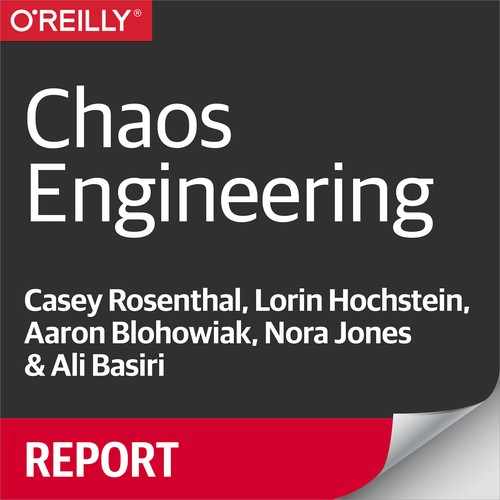Chapter 6. Automate Experiments to Run Continuously
Automation is the longest lever. In the practice of Chaos Engineering, we automate the execution of experiments, the analysis of experimental results, and aspire to automate the creation of new experiments.
Automatically Executing Experiments
Doing things manually and performing one-off experiments are great first steps. As we conjure up new ways to search the failure space we frequently begin with a manual approach, handling everything with kid gloves to gain confidence in both the experiment and the system. All stakeholders are gathered, and a heads-up is broadcast to CORE1 that a new kind of experiment is going to begin.
This apprehension and extreme level of care is appropriate to establish a) the experiment runs correctly and b) the experiment has a minimal blast radius. Once we have successfully conducted the experiment, the next step is to automate the experiment to run continuously.
If experimentation is not automated, it is obsolescent.
The intractable complexity of modern systems means that we cannot know a priori which changes to the production environment will alter the results of a chaos experiment. Since we can’t know which changes can impact our experiments, we have to assume they all do. Through shared state, caching, dynamic configuration management, continuous delivery, autoscaling, and time-aware code, production is in a perpetual state of change. As a result, the confidence in a result decays with time.
Ideally, experiments would run with each change, kind of like a Chaos Canary. When a new risk is discovered, the operator can choose whether or not they should block the roll out of the change and prioritize a fix, being reasonably sure that the rolled out change is the cause. This approach provides insight into the onset and duration of availability risks in production. At the other extreme, annual exercises lead to more difficult investigations that essentially start from scratch and don’t provide easy insight into how long the potential issue has been in production.
If experimentation is not automated, it won’t happen.
At Netflix, each team owns the availability of the services they author and maintain. Our Chaos Engineering team helps service owners increase their availability through education, tools, encouragement, and peer pressure. We can not—and should not—ask engineers to sacrifice development velocity to spend time manually running through chaos experiments on a regular basis. Instead, we invest in creating tools and platforms for chaos experimentation that continually lower the barriers to creating new chaos experiments and running them automatically.
Automatically Creating Experiments
If you can set up experiments that run automatically, on a regular basis, you’re in great shape. However, there’s another level of automation we can aspire to: automating the design of the experiments.
The challenge of designing Chaos Engineering experiments is not identifying what causes production to break, since the data in our incident tracker has that information. What we really want to do is identify the events that shouldn’t cause production to break, and that have never before caused production to break, and continuously design experiments that verify that this is still the case.
Unfortunately, this is a difficult challenge to address. The space of possible perturbations to the system is enormous, and we simply don’t have the time or resources to do a brute-force search across all possible combinations of events that might lead to a problem.
1 CORE, which stands for Critical Operations Response Engineering, is the name of the SRE team at Netflix.
